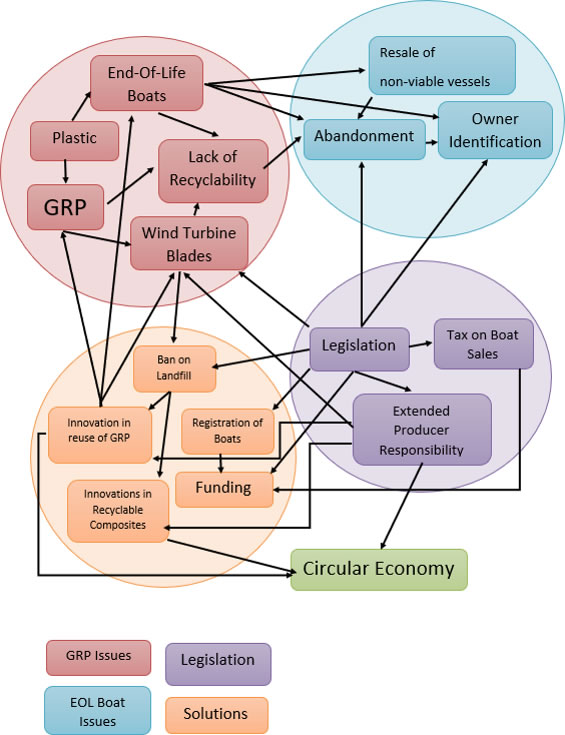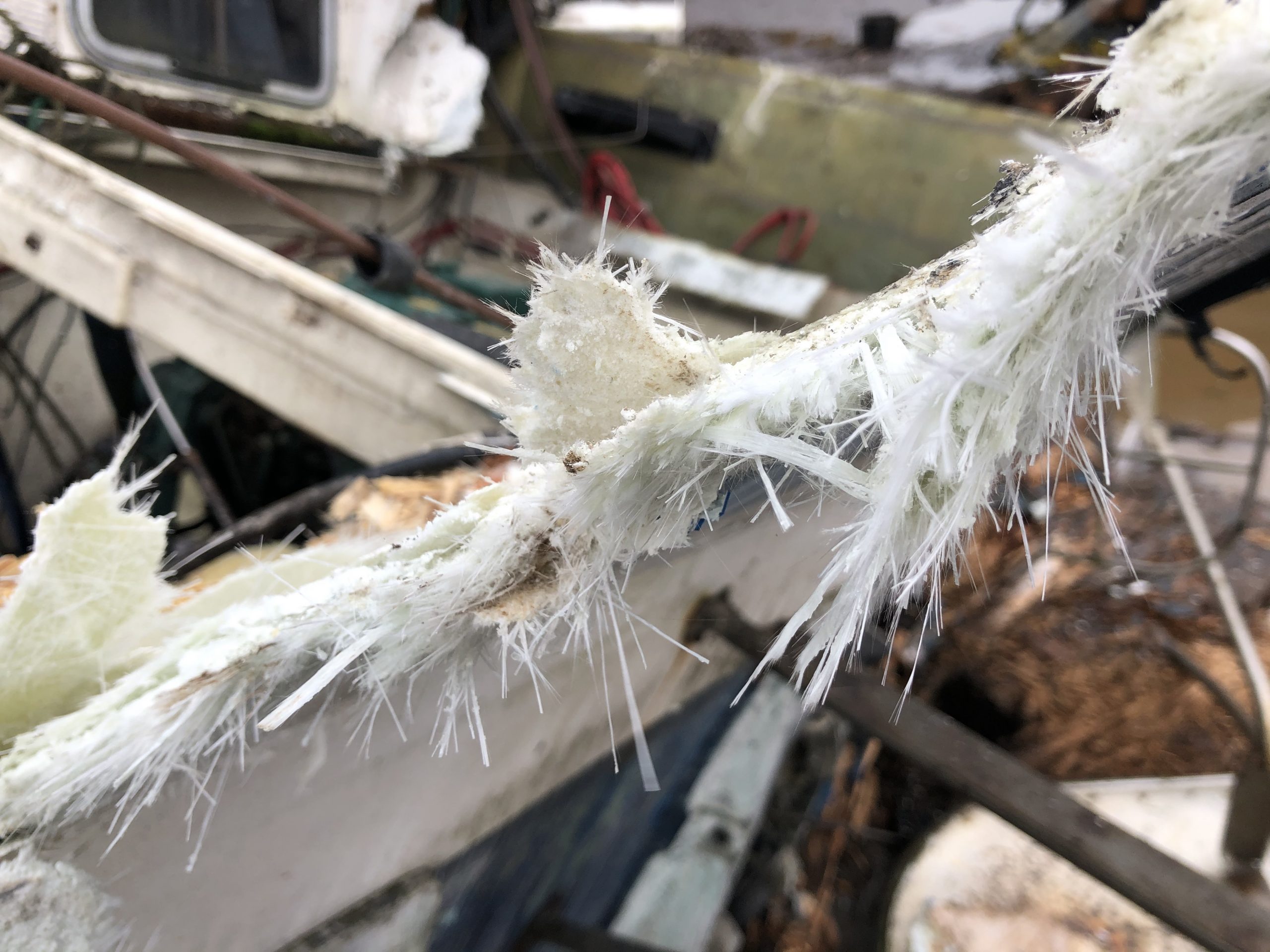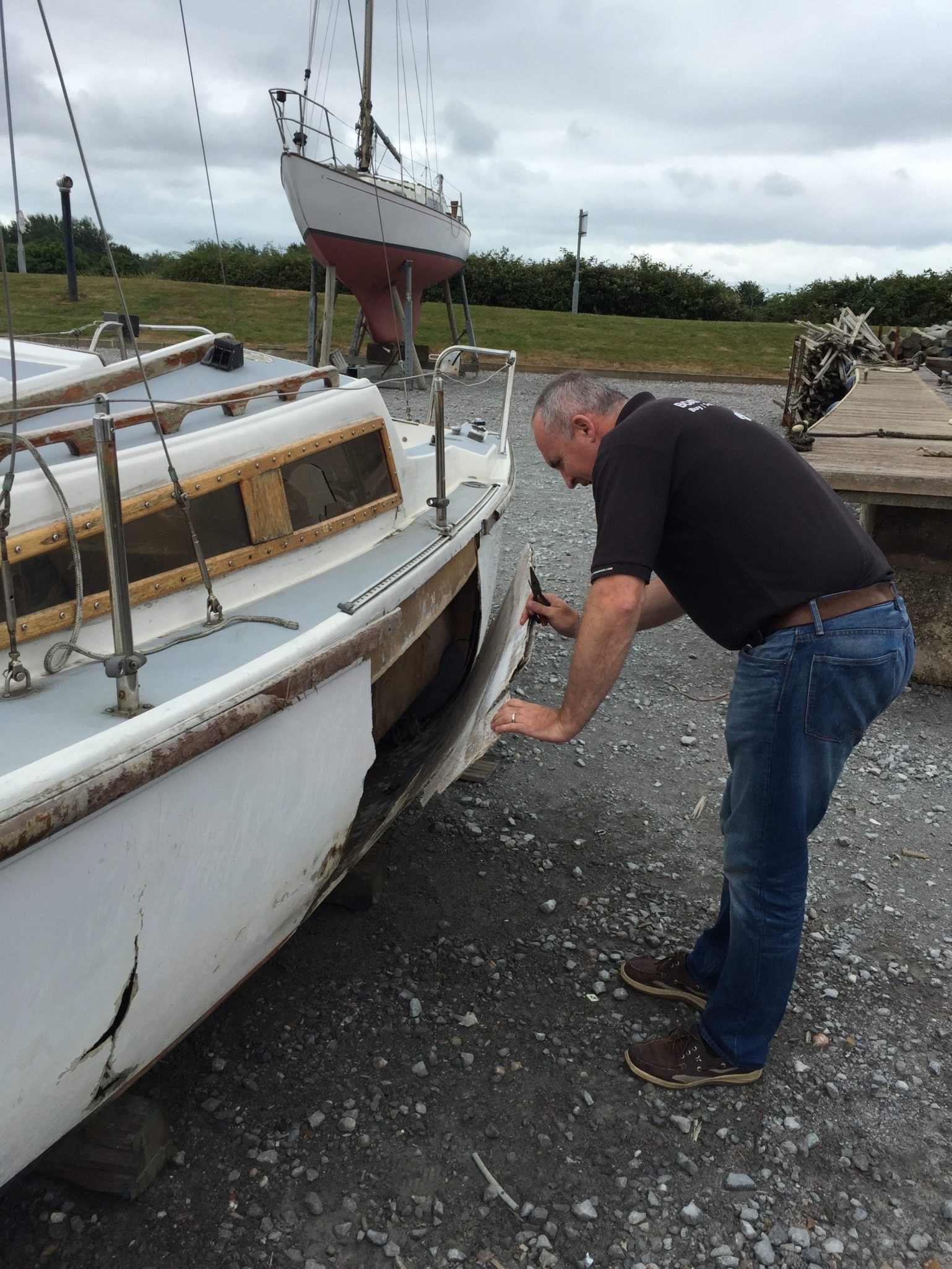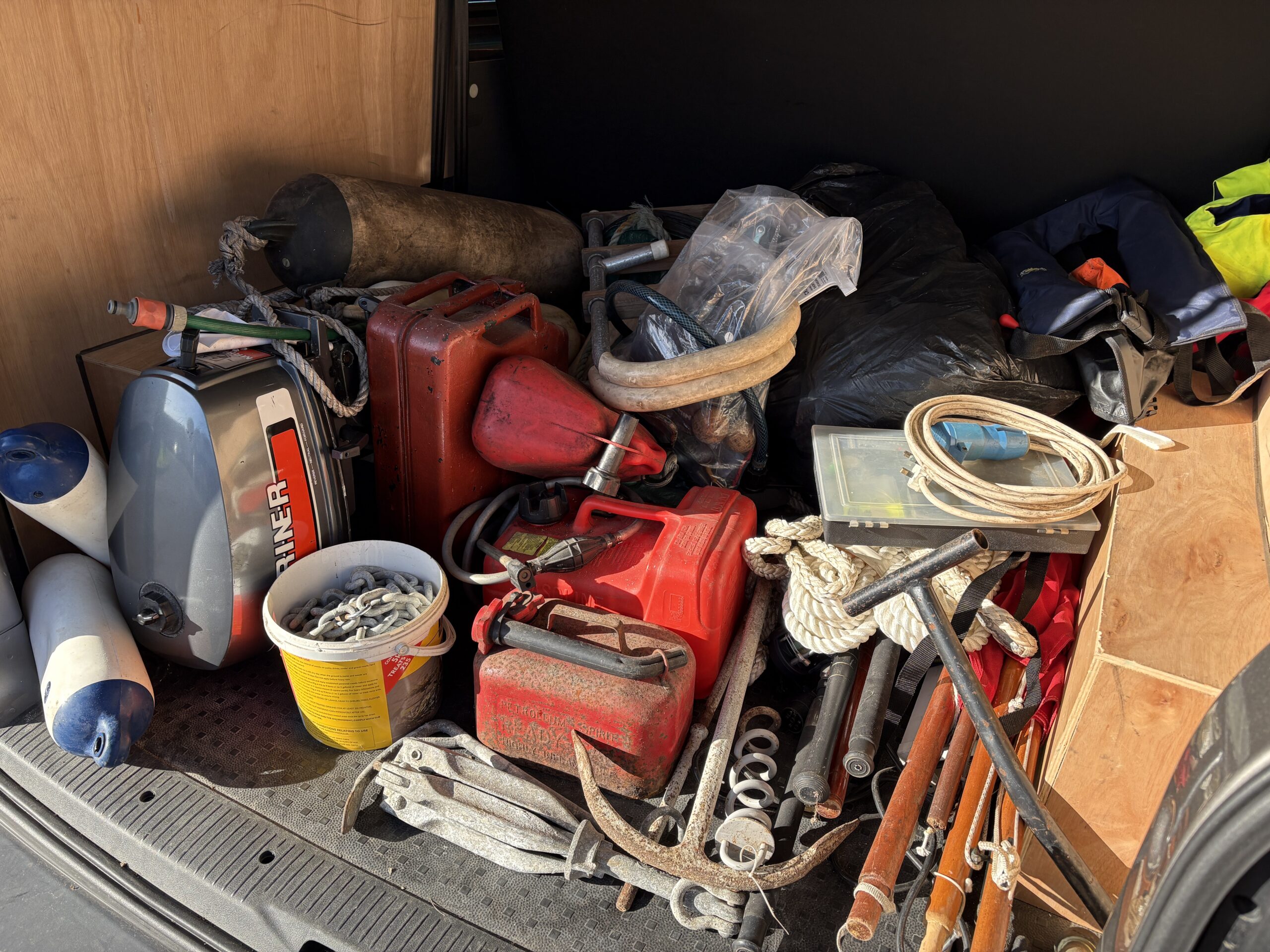University of Portsmouth study on End-of-Life-Boat Disposal Awareness
At Boatbreakers we are always happy to help with anyone who is looking to research End-of-Life-Boats. Judy Hilton contacted us earlier this year as she was starting a Masters at the University of Portsmouth. After some initial chats about advice on the best people to talk to our Boatbreakers team were also interviewed. Once a questionnaire was available we also helped by sharing it into our Boat Scrapyard Group.
We were pleased to hear that Judy received a distinction for her work and she has kindly allowed us to share her summary as a blog post. (Below)
A critical examination of the awareness of boat owners to end-of-life disposal of fibreglass hulls.
by Judy Hilton, University of Portsmouth 2021
Plastic pollution has become a global catastrophe; 550 billion plastic bottles are disposed of every year. Despite recycling availability, an estimated eight million tonnes of plastic reach the marine environment. GRP has been relatively ignored but is another plastic, being buried in landfill, burned or dumped in the sea, remaining in the environment for hundreds of years. GRP breaks down into microplastic, entering the food chain and burning releases hazardous chemicals. In contrast to PET plastic bottles, there is currently no recycling method for GRP that is cost effective or circular. GRP boat hulls have additional problems of bio-contamination, antifoul and a sandwich construction with foam or balsa.
The wind turbine industry is replacing blades producing vast amounts of GRP waste. Due to the blade size and construction, there are many similarities between blade disposal and boat hull disposal. The renewable energy industry is acutely aware of the requirement to find a solution for this problem. This is a route for innovation for cost effective recycling for both blades and boats.
Two Distinct Groups
The research project aim was a critical evaluation of the awareness and attitudes of recreational boat owners to the issues of end-of-life disposal of fibreglass boats. The questionnaire examined awareness and future options for funding and regulation for End-of-Life boats. The response rate was good and there was enthusiasm and concern about this subject. The results demonstrated two distinct groups, older boat owners who keep theirs boats long-term and newer boat owners who change boats more frequently. As a group, the respondents were concerned about the environment; they are on the coast, emersed in the outdoors and appreciate the sensitive ecology.
There is a disconnect between what is occurring with boat abandonment and what people believe they will do with their boat at End-of-Life. Once the vessel reaches EOL, the owner may resort to abandonment due to the cost and difficulties associated with proper disposal. There appears to be the desire to act responsibly but a lack of means and money to carry this out. This is further confirmed by the gross underestimation of cost of disposal.
Lack of Information about Boat Disposal
There is a lack of information of the proper disposal routes, but most believe disposal and funding is the responsibility of the owner. This is problematic as the last owner is the least able to pay the disposal cost. A large proportion of boat owners (67%) had not received information on boat disposal from any sources. There is an opportunity for the organisations to inform owners of current best practice and to highlight the problems in this area. A clear accessible pathway within a reasonable distance of major recreational boating areas would give owners the opportunity to be responsible.
The introduction of Extended Producer Responsibility (EPR) for new boats, similar to the End-of-Life Vehicles Directive 2003 for cars would encourage best practice and development of new designs that address recycling and ease of dismantling. EPR would encourage innovation in design and composite materials and recyclable composites would be used in favour of GRP. This will not occur without legislation as GRP has many properties that make it attractive to manufacturing.
There is a legislation void for recreational boat disposal. New legislation is needed for registration of owners, certificated disposal and controls on GRP disposal. Legislation would lead to better practice, design and materials, solving future removal. A ban on GRP in landfill would lead to innovation in recycling of this material.
Environmentally Aware
Owners of boats are environmentally aware and are concerned about EOL boat problems. There have been many articles in the press in the last three years indicating the level of concern. Lack of funding for disposal is a fundamental aspect as many are unable to afford the disposal costs, but this research indicated that boat owners wish to dispose of boats correctly. Problems arise when faced with very high disposal fees and most refuse to pay. The “hot potato” boat makes determining the extent of this problem difficult as these boats are in a cycle of restoration that never happens and are passed on at low prices.
GRP is an exceptional material. The long life and repairability provide excellent restoration and reuse possibilities, leading to an environmentally sound material but once the product reaches EOL, the material becomes problematic with little alternative to landfill. GRP is an extensively used material throughout our lives. Innovation is required to solve GRP disposal and legislation would incentivise the use of new fully circular composites.
The void in legislation for recreational boats is at the route of the boat abandonment problem. It needs to be addressed urgently as we are on the edge of a tidal wave of EOL GRP boats.









